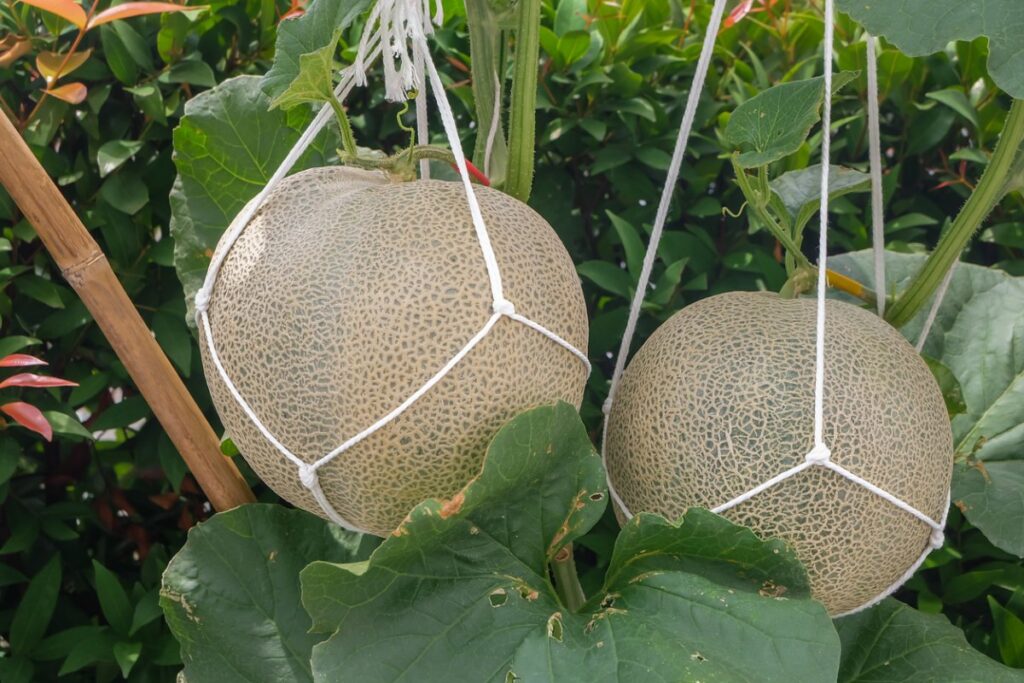
Introduction
Cantaloupe, with its sweet and juicy flesh, is a delightful addition to any garden. While traditionally grown sprawling on the ground, there’s growing interest in trellising cantaloupe for various benefits. In this article, we explore the feasibility and advantages of growing cantaloupe on a trellis, along with practical tips for success.
Benefits of Growing Cantaloupe on a Trellis
Trellising cantaloupe offers several advantages for both gardeners and the plants themselves. Firstly, it saves valuable garden space by allowing vertical growth, making it ideal for small gardens or even container gardening setups. Additionally, trellising promotes better airflow around the plants, reducing the risk of fungal diseases such as powdery mildew and improving overall plant health.
d ground-dwelling insects. This elevated position also makes it easier for gardeners to monitor the health of the plants and harvest ripe fruits without bending or stooping.
Selecting the Right Trellis System
Choosing the appropriate trellis system is essential for successful cantaloupe cultivation. Considerations include the material and design of the trellis, as well as its height and spacing relative to the cantaloupe plants. Opt for sturdy materials such as wood or metal that can support the weight of mature vines and fruits.
The design of the trellis should allow for easy attachment and support of the cantaloupe vines as they grow. A trellis with horizontal supports or mesh netting provides ample space for the vines to climb and ensures proper airflow around the plants. Additionally, consider the height of the trellis to accommodate the natural growth habit of cantaloupe vines, which can reach several feet in length.
Ensuring stability and support for the trellis is crucial to prevent collapse or damage to the plants. Secure the trellis firmly into the ground or onto a stable structure to withstand wind and the weight of the growing vines. Regular maintenance and inspection of the trellis system throughout the growing season will help ensure its effectiveness and longevity.
Proper Care and Maintenance of Cantaloupe on a Trellis
Once the cantaloupe vines are established on the trellis, proper care and maintenance are essential for optimal growth and fruit production. Pruning the vines helps control their size and shape, promoting better airflow and light penetration to the fruits. Remove any excess foliage and lateral shoots to focus the plant’s energy on fruit development.
Provide consistent watering to keep the soil evenly moist, especially during hot and dry periods when cantaloupe plants have high water requirements. Mulching around the base of the plants helps retain soil moisture and suppresses weed growth, reducing competition for water and nutrients. Additionally, fertilize the plants regularly with a balanced fertilizer to support healthy growth and fruit development.
Monitor the trellised cantaloupe plants for signs of pests and diseases, such as aphids, cucumber beetles, or powdery mildew. Promptly address any issues to prevent them from spreading and impacting plant health. Consider using organic pest control methods such as insecticidal soap or neem oil to minimize harm to beneficial insects and pollinators.
Harvesting and Enjoying Cantaloupe Grown on a Trellis
As the cantaloupe fruits mature, they will develop a sweet aroma and slightly soft texture at the stem end. This indicates they are ripe and ready for harvest. Use sharp scissors or pruning shears to cut the fruits from the vines, taking care not to damage the stems or surrounding foliage.
Harvested cantaloupes can be stored at room temperature for a few days to ripen further or refrigerated for longer-term storage. Enjoy them fresh as a refreshing snack, in fruit salads, or blended into smoothies for a delicious and nutritious treat. Growing cantaloupe on a trellis not only saves space but also enhances accessibility and plant health, resulting in a bountiful harvest of sweet and flavorful fruits.






